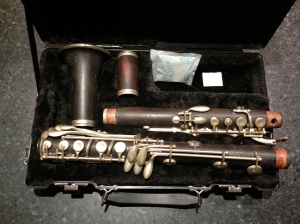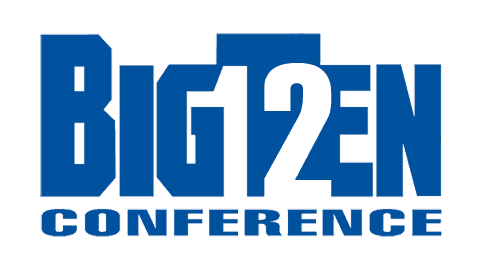I had been a fan of stand-up comedian Steven Wright since the 1980s. His 1985 comedy album, I Have a Pony, was nominated for a Grammy Award. And in the 1990s I saw him perform on TV in Mad About You (scripted) and in person (stand-up) in Madison, Wisconsin, but since then I mostly lost track of him.
It turns out he wrote and produced an Ocscar-winning short film, The Appointments of Dennis Jennings, in 1988. He also had another Grammy nominated comedy album, I Still Have a Pony, in 2007. I had been unaware of these. I should check them out.
If you’re unfamiliar with Steven Wright’s stand-up style, here are a few one-liners from his 1985 comedy special on HBO. He delivers these consecutively, pausing between them for the laughter to die down but with no additional commentary. Most, but not all, of his set is delivered this way.
Curiosity killed the cat, but for a while I was a suspect.
When I die I’m going to leave my body to science fiction.
I was arrested today for scalping low numbers at the deli. I sold a number 3 for 28 bucks.
I was once arrested for walking in someone else’s sleep.
In 2023, Wright did something new. He wrote a novel, titled Harold. Simon and Schuster published it and my local library has a copy. I’m glad I read it, but I’m not sure who I should recommend it to.
Harold, the novel’s seven-year-old protagonist, is in 3rd grade. (I’m not sure how that works because most American third-graders are 8 or 9, not 7, but I guess that doesn’t matter. Harold is also more self-aware than you would expect a third-grader to be.) Harold doesn’t pay much attention in class. Instead odd thoughts come to him, and the narrator divulges them to us. Many of these thoughts are essentially Wright one-liners.
Some of Harold’s thoughts are good enough that they could be included in a Steven Wright stand-up set. Some of them aren’t good enough for that, but I guess (?) we should cut Harold some slack because he’s only seven years old. Here are some examples:
He was curious if when birds see each other do they ask in their bird language: “How was your flight?” Just to be sarcastic. (page 173)
He though that someday he would write a book that was all blank pages and the title would be: What I Didn’t Say (page 18)
He remembered that his grandfather told him that he once went to the beach and forgot to bring a book so he wrote one. It was about a city that accidentally hires a roller coaster company instead of a subway company. It’s all underground and at each station it’s flat and looks just like a regular subway. Then when the people get on and the train leaves the station it’s a whole other story. (page 188)
Ok, that one is longer than a one-liner. However it’s the kind of thing that could easily appear in a Wright stand-up set, except without the grandfather. Some of Herald’s thoughts are his own original thoughts. Others, like this one, are attributed to someone else and Harold is merely recalling it. I’m not sure I understand the point. Does it make the grandfather the crazy one and Harold more sane? That hardly seems necessary.
Reading this book reminded me of both Nicholson Baker and Kurt Vonnegut. That’s got to be a compliment, right? If I ever wrote a book and some said it reminded them of Baker and Vonnegut, I’d count that as a win.
It reminds me of Baker in a couple of ways. It’s like The Mezzanine (1988) in that the duration of the actual plot is small. The plot of The Mezzanine is that the protagonist ascends an escalator after lunch. This escalator ride takes the entire book because the protagonist has a lot of thoughts. The plot of Harold isn’t quite as short. It begins with the protagonist in this third-grade classroom (perhaps even late in the day) and it ends as soon as he arrives home. (He’s still at school on the penultimate page of the book.) The timespan of Harold‘s plot might only be an hour or two, but it takes the entire book because his mind is elsewhere. Occasionally his teacher interrupts and brings him back to reality, but only briefly.
Another way Harold reminds me of Baker is that part of the narration takes place in what Harold calls “artificial memories.” These are scenes invented by the protagonist, where he interacts with other characters in his mind, dreaming up what they say and how they react. The actual characters he interacts with, in the plot’s real world, are oblivious to these artificial memories. Baker’s protagonist does this in The Fermata (1994), but only for a few chapters. In Harold it’s more than half the book. Sometimes they are nested, where during an artificial memory Harold recalls a different artificial memory.
The way it reminds me of Vonnegut is harder to pin down. The sentences are short, the thoughts mostly direct. The vocabulary is basic, from both the seven-year-old protagonist and the occasionally omniscient narrator. (This is definitely not Nicholson Baker’s style, by the way.) There is a certain wryness.
There were a few little spots in the book that strongly reminded me of Vonnegut. But, not knowing I was going to write a book review, I didn’t keep track of them. So I’ll end with a couple not-as-strongly Vonnegut-ish quotes:
As his grandfather once told him: “Everything happens for a reason other than coincidences and most things.” Right after he said this he laughed uncontrollably and coughed for two minutes. (page 132)
This doesn’t just happen to other people. There are no other people. We are the other people.
He imagined being at the beach and seeing a single engine plane pulling a sign—
THERE ARE NO OTHER PEOPLE, WE ARE THE OTHER PEOPLE (page 214)






 The Big Ten Conference announced its
The Big Ten Conference announced its 

 Automobile magazine reports that
Automobile magazine reports that 